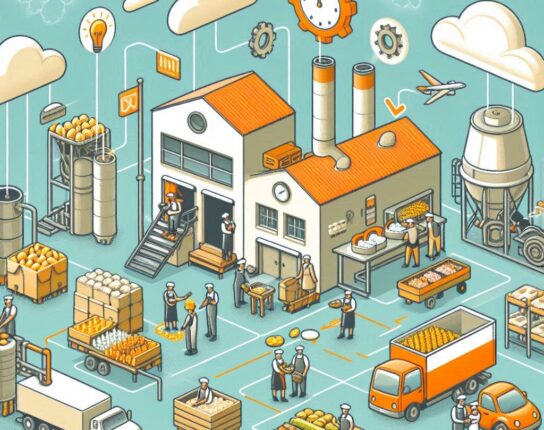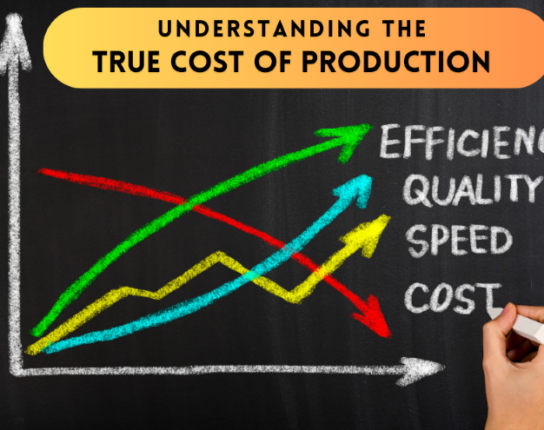Manufacturers and consumers around the world are seeing a price increase in foods. What initially seemed to be a temporary supply chain spike in the early days of the pandemic now appears to be here to stay. In fact, recent events (caused by natural disasters or other issues) have made the situation even more challenging for food manufacturers. Now they don’t need to just deal with demand, but the availability of materials and labor as well.
World food prices rose again in November to remain at 10-year highs, according to the United Nations’ Food and Agriculture Organization. The FAO’s food price index, which tracks the most-traded global commodities, rose 27.3% in November on a year-over-year basis – the highest reading for this index since June 2011.
Food manufacturers – large and small – have also spoken about the price increase, with Kraft Heinz CEO Miguel Patricio telling Reuters that they’ve seen inflation “in grains and everything related to grains….Sugar has big inflation; mac & cheese because it has wheat; mayo because it has oil; salad dressing because it has oil; all sweet products like desserts.”
Price increase in raw materials have extended to the packaging and transportation as well, with some examples being:
- Paper pulp: +60% for hardwood and 21% for softwood
- Diesel fuel: +19%
- Gasoline: +12%
- Aluminum: +11%
The jump in expenses is causing food and beverage manufacturers to assess all aspects of their business in a bid to wring out costs, including their product mix, supply chain, and promotions. Some things food manufacturers can do to help them ride the storm include:
Look forward
Just suddenly increasing your prices is a bad idea – both for your manufacturing process and for your relationships with relaters and customers. With large retail customers, it may not be an option. Provide plenty of lead time, and ensure the price increase isn’t conflicting with any other campaigns. If possible, expose your detailed costs to the customer so that they can see the increase in raw material and labor costs that need to get passed on downstream.
Plan ahead and buy in bulk where possible – look at your supply chain and plan as far ahead as you can by getting orders in early, even if understanding that they may take longer to fill. If this creates a cash constraint, discuss your financing options with suppliers or third-party lenders.
Flex your superpower
Smaller companies often have the benefit of being more flexible than larger companies, being able to swap out a scarce ingredient, or changing their packaging. This is especially important as they don’t have the scale or large bank accounts that the big companies have, smaller businesses can make flexibility their superpower to help them ride out challenging times.
Show your commitment
Let your customers know that you’re not going to bail on them or pull any other surprises. Reaffirm your commitment to your relationship, towards further building your brand so they have the confidence to continue selling your products.
Finetune your supply chain
- Know your suppliers
Similar to strengthening your retailer relationships, get to know your suppliers if you’re currently relying heavily on a third party to manage that relationship. Don’t miss out on critical information such as the availability of raw materials, the capacity of the teams, and delivery schedules.
HarvestERP puts supply chain data in your hands, allowing you to plan your raw material and packaging needs on-demand; track production line scheduling; manage delivery schedules — all in one place.
- Understand your full supply chain
Especially during uncertain times, with a reduced workforce and decreases in production, it is more important than ever to understand every link in your global supply chain. Having detailed information about your suppliers will help you minimize disruptions and keep your business running smoothly. Put together a list of pertinent questions for your suppliers, such as: how many days a week do you work, how many shifts do you have, how many units do you produce per day, and so on. Getting this needed information is a critical part of your improvement.
- Go Digital!
One of the major mistakes we are seeing is when businesses do not take full advantage of the technology that is available to them. The more links you have in your supply chain, the more important it becomes that key players have access to necessary data. This includes not only connecting with supply chain operations, but with sales as well. Explore the digital tools that are available to help save your business time and money. HarvestBI provides a single source of data for your entire organization, capable of running on any type of device or operating system.
Knowledge is Power
Predictive AI algorithms can help collate massive amounts of data and create workable solutions. With deep learning, you can task AI to analyze trends and make suggestions to stay ahead of consumer demands. With the complex analysis that AI can perform continually, you can quickly change gears to meet new market demands. AI systems can help you work the kinks out of a new procedure with less time wasted, thanks to their ability to perform complex calculations at extremely high speed. Using an AI to run analysis is like hiring a team of MIT mathematicians to work around the clock, but at a fraction of the cost.
Talk to us
At Harvest Food Solutions, our goal is to make your business run more smoothly. Our software solutions offer increased efficiency and let you focus on what you do best: delivering quality perishable food items to your clients. When it comes to optimizing your supply chain, data is of the utmost importance. We have spent decades analyzing the perishable food industry, creating effective management tools, and building a community of experts and users. Our cloud-based systems are designed to give you maximum control of the data you need to keep your perishable food business running smoothly.
If your business needs some assistance in getting your supply chain optimized for long-term efficiency, we are ready to help. Give Harvest Food Solutions a call today to find out how our systems can help your business.










